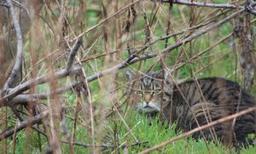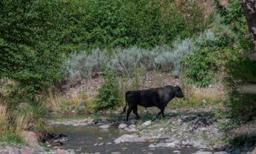DNA Analysis Reveals Deer Posing a Threat to Australia’s Rare Native Plants
A study finds that protected deer are also munching on Australia’s threatened plants and vegetation, posing a threat to its alpine ecosystems.
While deer are listed as protected wildlife in Victoria, a new study has found that Australia’s largest feral deer species—the sambar deer—have been feasting on rare and threatened alpine plants and vegetation.
DNA analysis of deer faeces found that their diet includes vulnerable native species as well as invasive plants like hawkweed and grey sallow willow, which can further threaten native vegetation as the deer transports seeds to new locations.

“Over the last decade, there has been a significant increase in the range and abundance of sambar deer within the Alpine National Park,” noted the study which examined the deer that graze on the Bogong High Plains in Victoria’s largest national park.
“Although many of the species detected in the diet of sambar deer are considered widespread in the environment, we detected several species of conservation significance.”
These included wetland plants such as the broad-leaf flower rush and the alpine marsh-marigold, as well as snow-patch species including the silky snow daisy, which is listed as critically endangered in Victoria.
“Although it appears that sambar deer are not selectively targeting these particular dietary items, the extent of browsing may only need to be minimal to have detrimental impacts on rare species,” the study authors warn.
Protect or Control?
The study also points out that sambar deer have a perplexing legal status in Victoria, being both protected wildlife and considered a potential threat to the environment.
“They are listed under the Flora and Fauna Guarantee Act 1988 as a ‘potentially threatening process’ to biodiversity in Victoria yet are also protected as wildlife under the Victorian Wildlife Act 1975, due to their value as game species,” the authors wrote.
The Victorian government said that this was being discussed in a review of the Wildlife Act announced two years ago, but has been ongoing due to the complexity of the issue.
“The status of deer as game does not prevent their control when they are causing damage to the environment or property,” a spokesperson said, adding that $19.25 million (US$12.27 million) has been allocated over four years for the state’s deer control program.
Culling is Necessary Evil, Wildlife Expert Says
Given the real threat that invasive species pose to native species, culling their numbers is necessary because of their “predation, competition, and disease spread,” according to wildlife expert Elizabeth Bell, who has over 25 years of field experience in invasive species management.
“Invasive species have been either accidentally or intentionally introduced to various locations across the world, and the ecosystem has become unbalanced resulting in the reduction or extinction of native species,” Ms. Bell, head of Wildlife Management International, told the Epoch Times.
She said that large-scale poison operations can be highly effective and that measures are taken to minimise harm to non-target species.
“Warning notices and education of communities in the operational area are required to ensure people know what is happening in any public space,” Ms. Bell said.
“Delivery of poison is carefully controlled, either in bait stations or in a way to limit availability to other
Source link






